Packed with antioxidants and vitamins elderberries are considered the top antiviral herb on the planet that we can benefit from twice a year. It is actually a shrub and here is a clear explanation.
First in spring when in May bloom with intense smelling yellowish-white flowers. Then again in autumn when it reveals the rich tassels of the fruits blackberries, bending the narrow branches down to the ground.
Why forage elderberries?
Elderberry benefits
Elderberries are packed with antioxidants and flavonoids that successfully deactivate viruses in our bodies. They are known for their high content of vitamin C and antioxidants mainly polyphenols (1).
These help stimulate the immune system and increase the activity of antioxidant enzymes in the blood. In other words, Elderberries can help overcome symptoms of flu and cold.

And yet, there are just a few studies confirming their superpower …
I found one from 2011 conducted by Bio Med Central confirming that in vitro Elderberry extract inhibits the growth of bacterial and viral cells within 48 hours.
Another study examining 60 people with influenza revealed that patients who took 15 ml of elderberry syrup 4 times a day showed improvement of symptoms in 2- 4 days. While it took 7-8 days for the control group to improve. However, further research needs to be performed on a larger scale to prove its effectiveness.
What we know is, that Elderberries are packed with antioxidants that include vitamins, phenolic acid and flavonoids that may help prevent chronic diseases (3) and reduce inflammation (4)
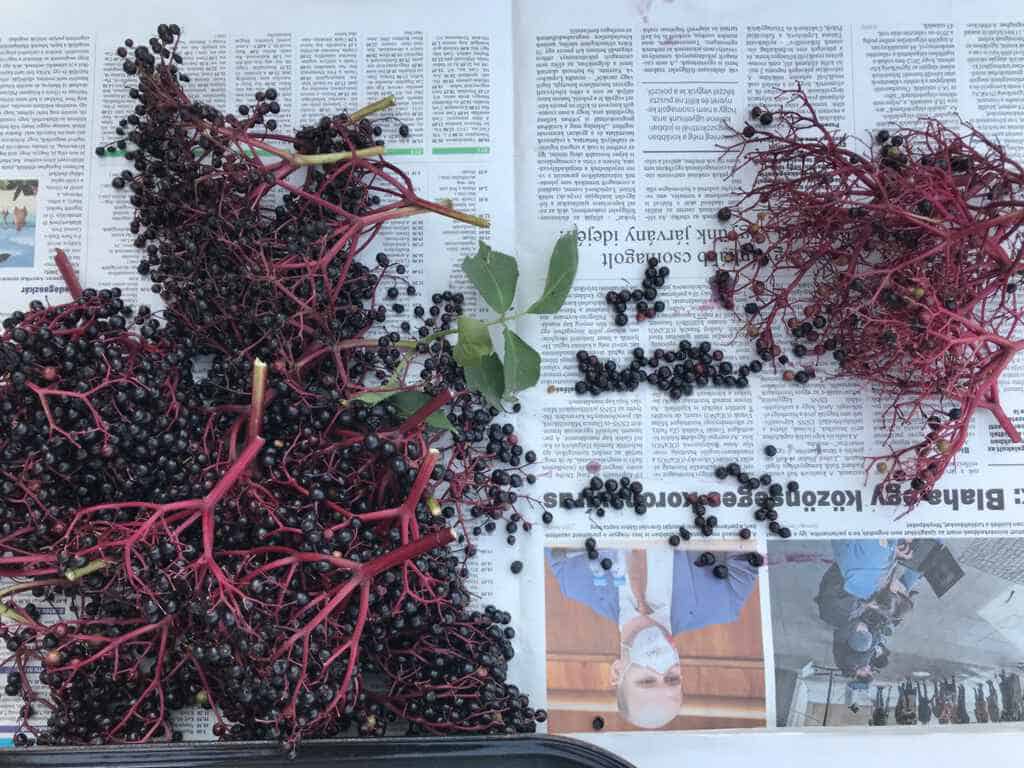
How to process elderberries to protect their superpower
While elderberries are powerful antioxidants they contain very fragile substances that if processed with heat, their antioxidant activity is rapidly reduced (5). Therefore while elderberry tea, syrups, jams and juices are healthy and tasty, their antioxidant activity is weak. (6)
One of the best ways of preserving elderberries is to turn them into powder. In one teaspoon of this concentrated form packed with healthy nutrients is equivalent to a 100 g of fresh elderberries.

In addition, Elderberries contain antioxidants mainly polyphenols (7) that help to stimulate the immune system and increase the activity of antioxidant enzymes in the blood.
Moreover, elderberries also contain high amounts of fibre (8) and anthocyanins (9) that give the berries their characteristic dark blue-purple colour and possesses anti-inflammatory properties.
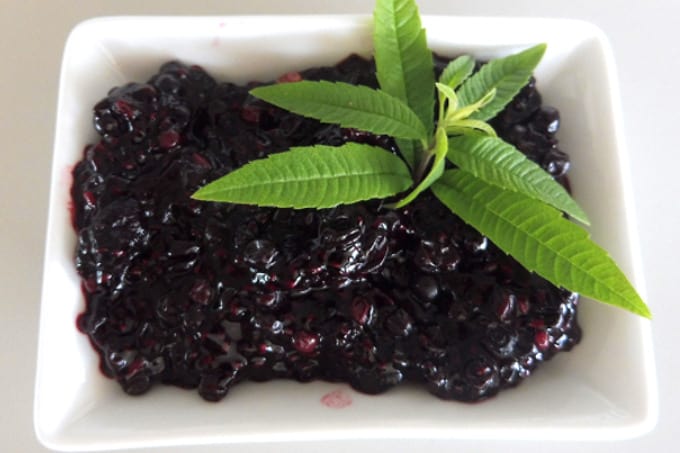
Are elderberries toxic?
The leaves, stems and unripe berries of elderberry are toxic, so make sure to pick and use only ripe berries. Avoid Red Elderberry, Sambucus racemosa, which are toxic, regardless of ripeness. Raw elderberries are a bit bitter and can cause stomach upset, so they are best cooked.
I went through several articles searching for facts and studies that could confirm whether it is safe to use dried elderberries without further cooking.
Elderberries are considered a top antiviral herb on the planet with many medicinal components that when processed with heat lose some of their properties such as vitamin C or antioxidant anthocyanin (10).
Secondly, the toxic compounds (cyanogenic glycosides) are far more present in stems and leaves rather than in ripe berries and flowers.
Other components such as lectin that might be present in uncooked berries may rather cause digestive problems such as vomiting or nausea and not everybody is sensitive to lectin.
So I personally used uncooked elderberries in the elderberry powder as I don’t want to lose their powerful components with heating and I only use a small dosage (such as a teaspoon or 2 in my meals. However, if you are sensitive to lectin or plan to use a higher dosage of elderberry powder I suggest you cook the elderberries first for 10 minutes before letting them dry.

How to identify elderberries
There are three main types of elder: black elder (Sambucus nigra), blue elder (Sambucus nigra su cerulea), and red elder (Sambucus racemosa).
The most commonly foraged are black and blue. The red elder is considered toxic when eaten raw and need to be cooked prior to eating.
Other common names: elder, elderberry, black elder, European elder, European elderberry, and European black elderberry
LATIN NAME: Sambucus nigra and its subspecies Sambusuc nigra subsp. Canadensis, Sambucus nigra subsp. caerulea
Elderberries grow in Deciduous tree or shrub of height 1-4 m ((4-12’)
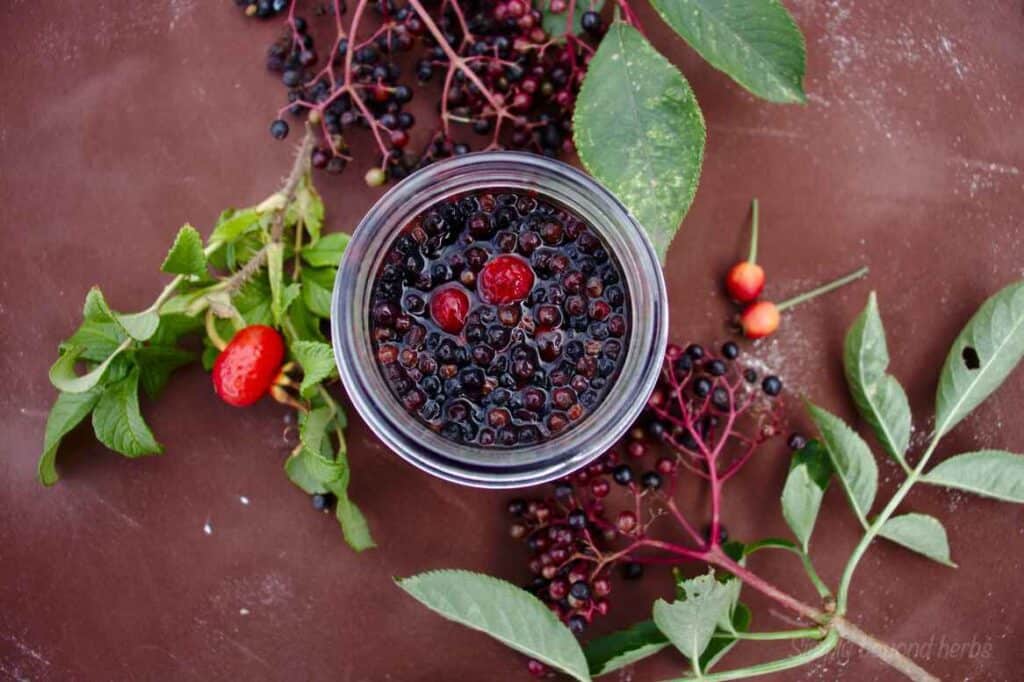
Elderberries leaves
Leaves are 5 to 7 finely toothed lance-shaped green leaves with lighter veins. They tend to fade off and narrow as they reach the edge of the leaf.
Elderberries stem
Young plants (The first year of growth) have green stems. When they grow older their stems will cover with bark. Typical elderberry plant has both green stems as well as stems with bark. On the wooden stems appear tiny bumps that become bigger with the age of plant. These bumps help you to identify the elder even if it is not berry or flower season.
An elderberry plant older than a year has several branches coming from near the base.
Be aware that elderberry stems and leaves are toxic and should not be consumed at all. Remove them carefully before using them.
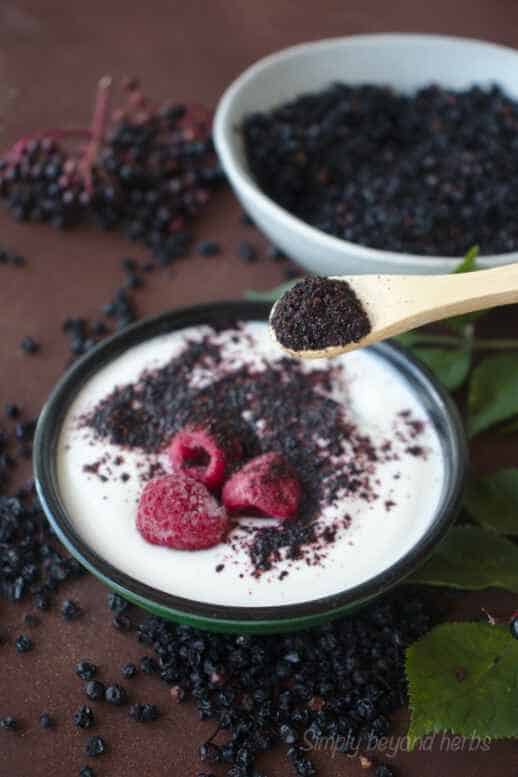
Elderflowers
When Elder starts to bloom, the identification is by far the easiest. It produces large umbels of small white flowers (4-12’ 10-30 cm in diameter) Each individual elder blossom have five rounded tipped petals and five stamens protruding. The creamy color and distinguished scents are very typical for elders. The flowers bloom from late spring to early summer depending on the weather and location.

Elderberries
It takes about 6-8 weeks for elderflowers to rip into the berry stage. from shades of blue and black to dark purple color, elderberries ripen in late summer to early fall. Berries grow in clusters and are a bit tart in taste. Collect the fruits (berries) when they are ripe. Take them carefully, remove the green berries, leave only black and healthy. We can dry them, make syrup, cook them as a compote, jam or pour the wine in the usual way. We can eat them raw, but only in smaller quantities because they are laxative.

Where do elderberries grow?
Elder shrubs can be found all over Europe, North America, and other parts of the world. While black elder (Sambucus nigra) is native to Europe, its subsp. American black elder (Sambucus nigra Canadensis) is native to eastern North America. People living in western North America can find more often blue elder (Sambucus nigra subsp. cerulea) as they naturally grow there.
Harvesting Elderberries
Look for blue-black clusters of berries that are completely ripe as unripe berries are toxic . The harvesting window last several weeks so harvest only fully ripe clusters, the rest leave until it’s ready. If you find an unevenly ripe cluster, snip off the riper parts and leave the rest or pick off ripe berries individually. Pay attention to birds as they like them too and they are waiting impatiently for them.
When you collect fresh ripe berries, remove them with fork or fingers from the stems. Discard the green and reddish ones that are not ripe yet. It is time consuming, some foragers freeze the clusters first which makes the removal faster. Once you removed all the berries, submerged them in water. This makes the unripe berries and stem fragment float on the top so you can skim them off.

Preserving Elderberries
Elderberries need to be processed in some way before they can be consumed safely. The elderberries are mildly toxic when eaten raw.
Fresh elderberries will last refrigerated for few days. I use them to make jam, syrup or gummies.
The best way to preserve them for later is to dry or freeze them. Once dried you can grind them into powder.
Drying Elderberries
Air drying
Spread them equally in full sun. I lke to cover them with a screen to prevent birds and insects from stealing the berries. The cover must allow sunlight to pass through. This method takes several days, depending on the weather. Alternatively, you can hang the bunches upside down.
Drying in the oven
Drying in the oven is a safe method that is not dependent on the weather. Use the lowest temperature setting (115 degrees Fahrenheit (46 degrees Celsius) and place elderberries on the tray in the oven. I like to use leftover heat, when I slide the tray of elderberries after baking. Since it’s more time-consuming but and can sometime last several days.
Using dehydrator
Using dehydrator is also way to go if you don’t have time to wait for elderberries to dry. It’s the fastest method but requires a good dehydrator.
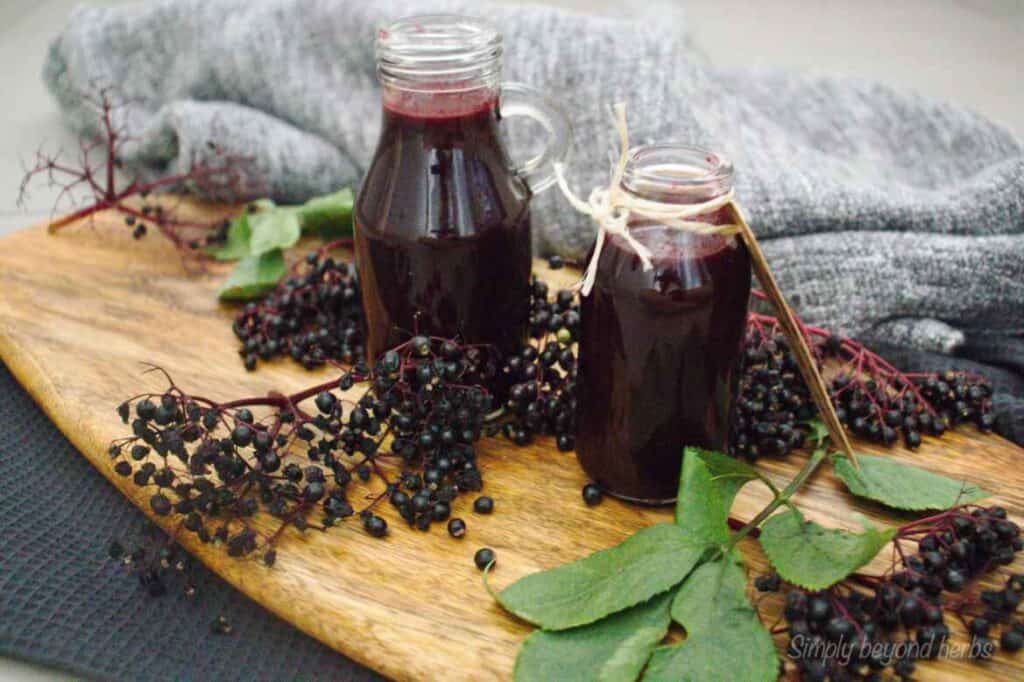
Freezing Elderberries
Is a great preservation method especially if you have a large freezer. You can use frozen berries the same way as fresh berries . The best practice is to freeze the berries on a sheet in a single layer before transferring them into a zip top bag or a jar.
Other way of doing it is to freeze them in a form of juice. Cook them over the low heat for 20 minutes. Mash them afterward with a spoon or use a blender to crush the berries. Strain them through a fine strainer that leaves you with a juice that you can freeze. Use it later in elderberry syrup or make this delicious elderberry lemon curd tart or elder berry chocolate tart.



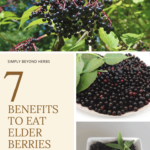







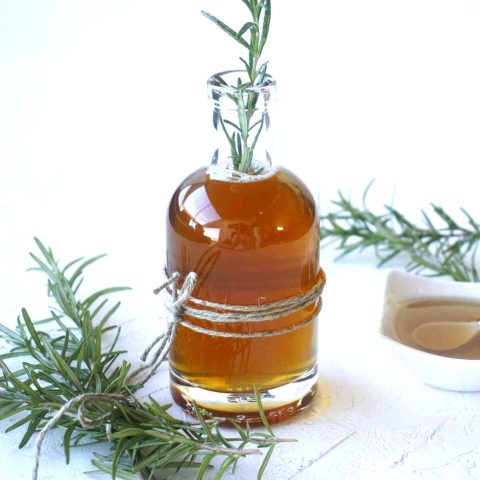


Great article. Can’t wait to try them this year
Can I use black lace Sambucus too?